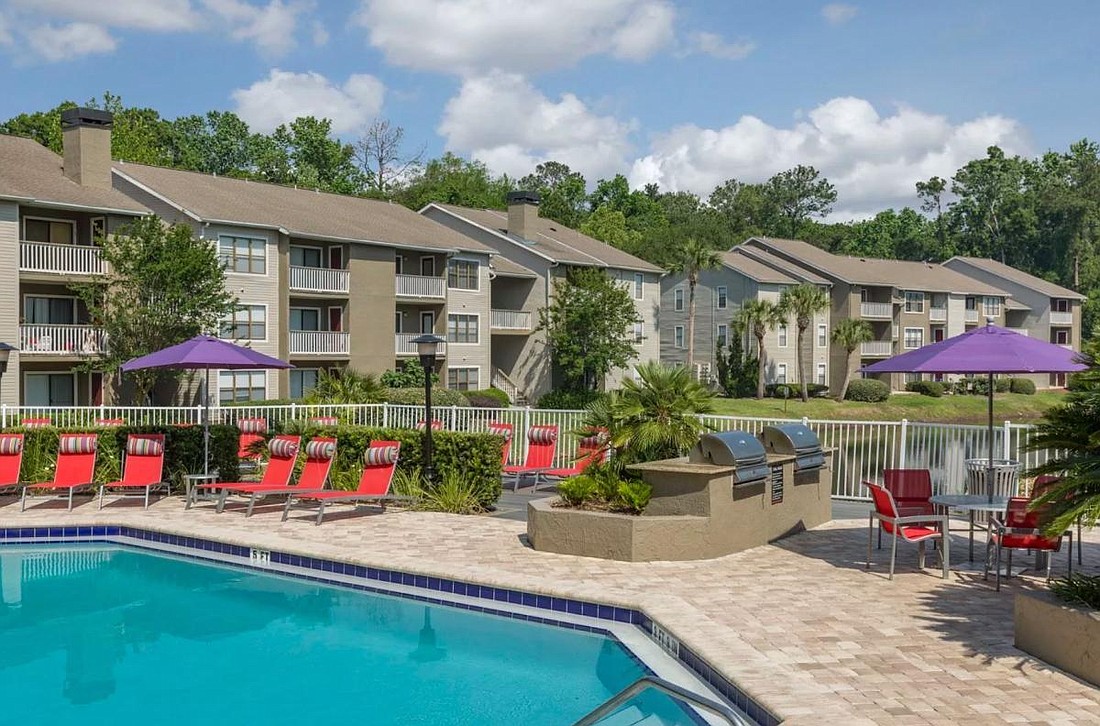
Apartment demand in Jacksonville should remain strong, even if there is a recession, because people still will need a place to live, says Bradley Coe, senior director of Multifamily Investment Services for Colliers International.
Coe said Northeast Florida is having the strongest demand in 10 years because of 3% unemployment, job growth, people moving to the area, relative affordability and an environment friendly to business.
“All these fundamentals fuel growth and performance within the multifamily sector,” he said, referring to the 96% occupancy rate. The vacancy rate dropped over the past five years, from 7.7% in 2014 to 3.5% in 2019.
Coe predicts the growth in apartment development over the past four years will continue.
Unlike other areas of the state, the Northeast Florida economy is not driven by tourism, Coe said.
He said apartment demand is being fueled by people moving to the area because of a balanced economy and job creation.
‘Epicenter’ of city
Coe said the St. Johns Town Center area is the “epicenter of Jacksonville” because of the abundance of jobs, entertainment, shopping, the University of North Florida, proximity to the Beaches and its site next to Interstate 295 and Butler Boulevard.
In the past four years, 70% of new apartments were built in the Town Center area, he said.
However, competition is slowing the leasing of new apartments there, leading to incentives for renters, Coe said.
“In the first two to three years, apartment units in the Town Center area were being absorbed, then additional units kept coming online, so they started competing, cannibalizing each other, offering concessions, free rent for a month,” he said.
Absorption is the time needed to fully lease an apartment community.
Colliers participated in nine new multifamily transactions outside of the Town Center area in the past four years and none struggled with absorption, Coe said.
The Point at Tamaya apartments, at Kernan and Beach boulevards, was renting 40 units a month during initial leasing, when the norm is 20 to 24 units a month.
Leasing near Town Center is eight to 12 units per month, taking longer to reach a stabilization occupancy of 93%.
Nearly 4,100 units are in the pipeline near Town Center with another 4,100 units in the rest of Northeast Florida.
Strong demand
Apartment demand is robust. Nearly 50% of people coming to Northeast Florida are renters by choice, Coe said.
Millennial renters don’t want to deal with homeownership, he said. “Why not rent a condominium-quality apartment, and avoid HOA fees and obligations tied to future assessments?” he said, referring to homeowner associations in single-family communities.
The new residents also will increase demand for older apartment communities. Class A apartments are 3 to 10 years old. Class B apartments are 10 to 20 years old and Class C are older than 20 years.
Most of the new Class A communities feature amenities like resort-style pools, fitness centers, athletic areas, dry cleaning, business centers, coffee bars and dog parks so landlords can attract high-end tenants.
Class B and C apartments, which rent for less than Class A units, represent about 88% of the units in the metro area, Coe said.
Class C properties, which account for 71% of the units, perform the best, he said.
About 90% of older apartment communities perform some level of annual rehabilitation, with improvements ranging from $4,000 to $7,500 per unit.
Work can include interior and exterior rehabilitation, roofs, landscaping, cabinets, flooring, countertops, appliances, lighting and painting.
Spending on improvements is based on attainable rental rates.
Rents on the rise
Apartment demand leading to increasing rental rates, up 2.8% over the past year, is attracting investors to the Jacksonville market, Coe said.
In the past few years, many investors came to the market looking for the “value add” play, Coe said.
Those investors acquire properties, upgrade about a quarter of the units, and make exterior base improvements.
After renting those units at higher rates, the investors then put the property up for sale.
Buyers see the potential for the property because of the higher rents and that the initial risk has been tested to create value.
That process used to take three to five years, but now happens in two to three years, Coe said.
He said 2016 was the first year that Northeast Florida exceeded $1 billion in sales, reaching $1.1 billion.
It reached $1.6 billion in 2017, then dropped in 2018 to $1.3 billion.
Sales in the first six months of 2019 were $675 million, which annualizes to $1.35 billion.
Coe expects apartment development, property rehabilitation and property sales to remain strong as rent growth continues.
He said the challenge for the multifamily sector is finding buildable sites.
Investors like the multifamily sector because it “weathers recession better than any other investment class,” Coe said.
It provides people a place to live and develops quicker than other sectors.
“In the last five years, multifamily has been healthy and was months ahead of other sectors like retail, office and light industrial coming out of the recession,” he said.